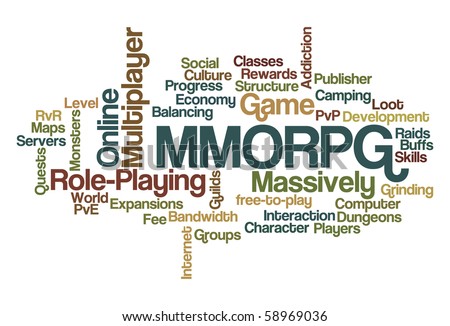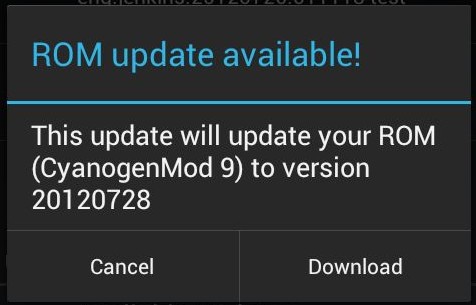Future of MMOGs
Massively Multiplayer Online Games
are a fledgeling industry as
it stands, the progression from
MUDs, MOOs and MUSHs to fully fledged multi-billion
dollar games has been rapid, but what can
happen in the future. This paper has
already shown that the boundaries
are being pushed by MMOGs
as it stands, what technical advantages.
Middleware
One of the
most important advancements
in development of
MMOGs is the
use of middleware. Any
game can be
split up into
smaller “areas of
responsibility”, such as graphics engine, physics engine, server
engine and character database. Most MMOGs are very similar and they may very well be able to share
one or more of the same engines.
There are a
number of engines commercially
available to do one or
more of the roles. A good
example is the MathEngine's Karma
physics engine employed
in a number of high profile
games:
“...eagerly anticipated titles at the
show integrating the
latest version of Karma
Physics. The line-up
includes Sony Online’s
highly anticipated massively multiplayer online first-person action game, PlanetSide™; Atari’s Enter The Matrix™ and UbiSoft’s Rainbow Six 3 – RavenShield™” (Renderware
Press Release)
Many
other games share
other engines for
example the Turbine
II game engine
and rendering engine are used
in Asheron's Call 2
and Middle Earth
Online (The Turbine 2 Engine,
Microsoft Games Insider) this is an
example of a game engine
that was developed in house by turbine
for Asheron's Call 2 and
then licensed out to Sierra to produce Middle Earth Online.
MMOG Frameworks
As the MMOG
market has matured, separate
engines have been produced
by a number of software publishers.
Often they have
been developed in-house
for a project, and
then licensed out once the concept
and implementation had
been proven.
There are
companies, that have dedicated
time and resources to creating
MMOG engines as a whole
package or framework, the premier
producer of such MMOG frame
works is BigWorldTech, who
describe their product as follows:
“The BigWorld™
Technology represents the
most scalable and customizable Massively Multiplayer
Online Game (MMOG) middleware available
anywhere in the world..
..It’s a total
solution to one
of the most
complex game development problems facing
the games developer community.” (BigWorldTech
- The Complete MMOG
Soloution)
The
essence of projects
like BigWorld Techhnology
is to create
an entire functional framework for a
MMOG, then allow
developers to flesh
it out with important
aesthetic aspects such as textures,
models, game logic
and audio effects. This
frees the developers and designers
up from the
complexities of implementing
the various components
of a MMOG.
BigWorld
Technology realised when
they started the project
to create this framework that most MMOGs followed a certain pattern.
They generally have characters, items, terrain, inventory space, vehicles, physics and
weather, all of these were then
implemented together in the
game engine. The
graphics engine is
responsible for rendering
the textures and models
that the the developers have
integrated into the game engine.
The server engine is responsible for
implementing the server
logic, checking characters
are where they
are meant to be,
controlling in game
non-player characters and
managing the user
and character databases.
BigWorld
Technology went one step
further by implementing a client
engine and a server engine, providing a even
higher level of abstraction,
the idea
is that no longer
does the designers have to worry about coding
anything at all, BigWorld Technology
provides tools to create the
models, textures and
game logic, then
to embed them into
their client and server.
Future
Genres
As it stands
the most prevalent form of
MMOG is a MMORPG, the primary
reason for this is
MMORPGs are
far less demanding than other genres, although there are
a number of genres which have
made an appearance on the
MMOG scene:
The main
problem with adapting
existing genres to the MMOG
market is the players are
often sceptical about
new genres, and as
most MMOGs require
a fairly large outlay in terms of buying the game
and paying for subscriptions, so new untested genres
often fail to reach a critical
mass.
Virtual
Reality
In the Star Trek films created by Gene Roddenbury, there was a
device known as a
“holo emitter” that had
the capability of
re-processing photons (light) to create solid
3D objects and avatars that
humans could interact
with, when combined with the
advanced artificial intelligences that
are an
integral part of Star Trek a “Holo Deck” is created. A “Holo
Deck” is essentially a three dimensional visual display unit.
Within the
films and series in the Star
Trek franchise there are a
number of times that the occupants of
the Star
Trek universe have used
the Holo Deck for a number of purposes, realization of engineering
models, training for real life situations and
playing multi-player games.
Although the “Holo Deck” and its
component “Holo Emitter” is a fictional
technology it is a reality that some
interface mediums other than
those which we are accustomed to at the moment are going
to be come available in the future.
With different technologies, comes different options and
challenges for MMOG developers,
the ability to
totally interact with a
Virtual World is a very appealing prospect to
many games who feel like their
hands are tied to their desks and they are
unable to realise the full potential of a virtual
world. The technology to actually
produce a 3D working model of a virtual
world and project
it in such a
way that
the objects and
other avatars can
be manipulated just by contact,
is a long way away. However
other technologies such as 3D glasses, not only a working technology
but a product(XForce 3D Glasses),
which project a different
image into each eye
giving a stereoscopic view
of the three dimensional
objects within the game.
Although 3D projection equipment
can deal with the visual aspects,
what you see and
hear is only half of what
the world actually consists of,
there are your
other senses touch
for discovering the temperature,
texture or weight and
for feed back from events such as
gun recoil. In the film Minority
Report26 the main character played by Tom Cruise uses a special glove to manipulate
a surround screen with information, the
glove controlled the
screen, when the screen could
not be controlled the glove
would provide feedback
to tell the user the end of the screen
had been hit.
“There is no doubt that
this is a virtual world, that everything we see and touch is an imitation
created from data. But to us, our hearts do exist within this reality. If
that’s true, then everything we’re experiencing here should also be true.”
Asuna, Sword Art Online
References
Alexander, Thor, 2003, Massively Multiplayer Game Development,
Charles River Media, ISBN 1584502436
Asher, Mark 2003 MMOs: The history of Massively Multiplayer
Online Games [Online] Available: http://www.gamespy.com/amdmmog/week4/
[Last Accessed: 26th November 2003] (Graded
B)
Bartle, Richard Early MUD History [Online] Available
http://www.ludd.luth.se/mud/aber/mud-history.html
[Last Accessed: 27th November 2003] (Graded A)
Bartle, Richard
A Zork: A Computerized
Fantasy Simulation Game [Online]
Available: http://www.mud.co.uk/richard/zork.htm
[Last Accessed: 27th November
2003] (Graded B)

.jpg)








